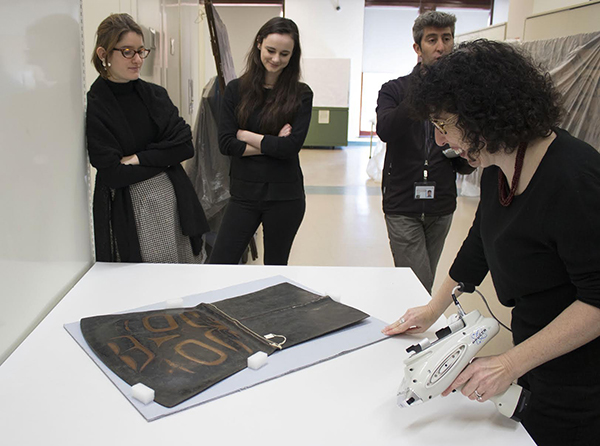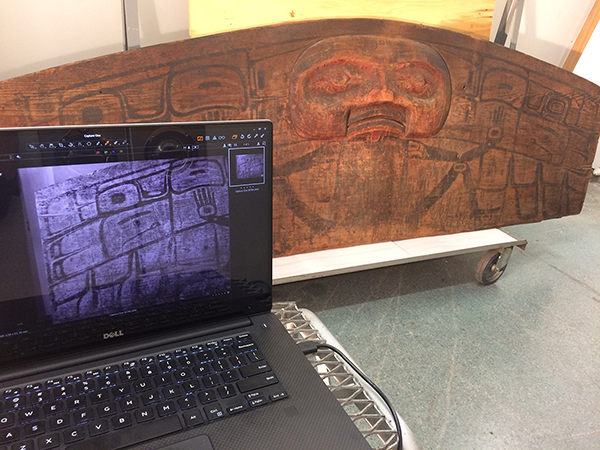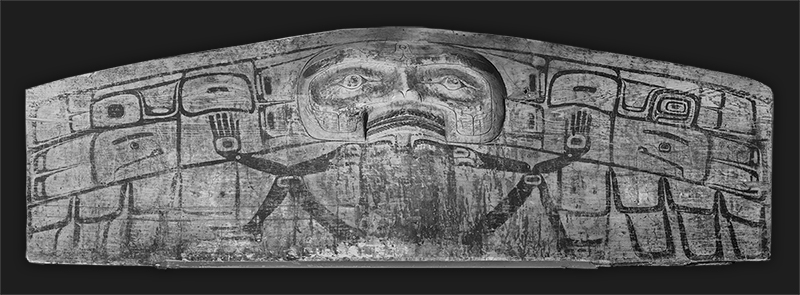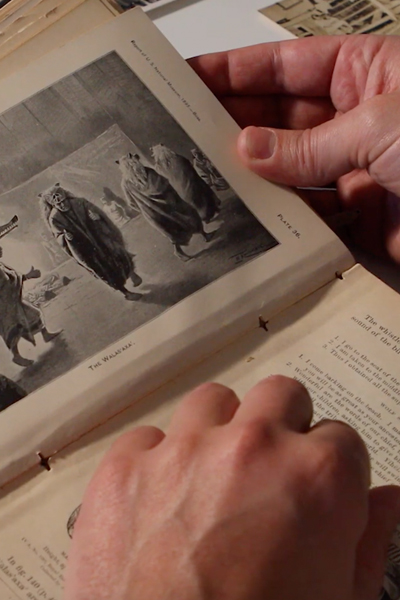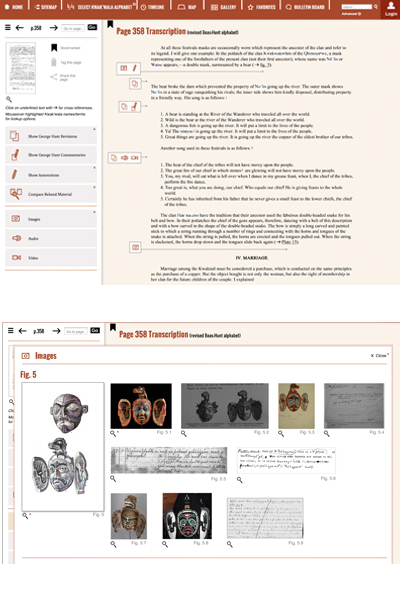CHAPTER XI: BEHIND THE SCENES
Insights from Scientific Analysis
Faculty and students from Bard Graduate Center conducted materials analyses on the pigments used in six objects from the American Museum of Natural History (AMNH) appearing in this exhibition, with portable x-ray fluorescence (XRF) testing done on five objects and infrared photography completed on a sixth. XRF testing is a non-invasive procedure that measures the energies of the fluorescent x-rays emitted from an object when bombarded by incident x-rays, thereby indicating the presence of specific chemical elements. The spectrometer, in this case a small hand-held device, is pointed at the object and sends x-rays into the atoms of the pigment present, causing the ejection of an electron close to the nucleus. To regain stability, an electron from an outer shell replaces the missing electron nearest to the nucleus, releasing x-rays as it travels. The spectrometer then measures the energy of these x-rays. Conservation specialists, like Professor Jennifer Mass of Bard Graduate Center who conducted these tests, then use software to plot the x-ray emissions and identify the elements present in the sample area.
Two chemical analyses from visually similar red pigments, one on the tongue of a carved face on the settee backrest (Fig. 1) and the other on the upper lip of one of the masks (Fig. 2), demonstrate the value of XRF testing. The energy readings of the red on the settee (AMNH 16/7964) show a significant presence of mercury (Hg); other elements detected to a lesser degree include potassium and nickel attributable to dirt built up on the surface of the wood. The mercury suggests the presence of mercury sulfide (HgS) in the pigment vermilion, which was historically derived from grinding up the naturally occurring cinnabar compound. Its use has been traced back thousands of years to China, though cinnabar occurs naturally in other areas, including the Northwest Coast.1 By the mid 19th century, vermilion was primarily obtained through trade;2 it was among the first non-Indigenous pigments used by Northwest Coast peoples and has been identified on thousands of objects from this period.3 The presence of this commercially obtained pigment is evidence of the complex web of trade in the region, with Asian commodities coming via European traders to the Northwest Coast. Imported commercial pigments did not alter the color schemes of Northwest Coast art. Rather, they presented an opportunity for artists to replace or supplement the locally derived pigments they had previously used, saving significant time and energy.4
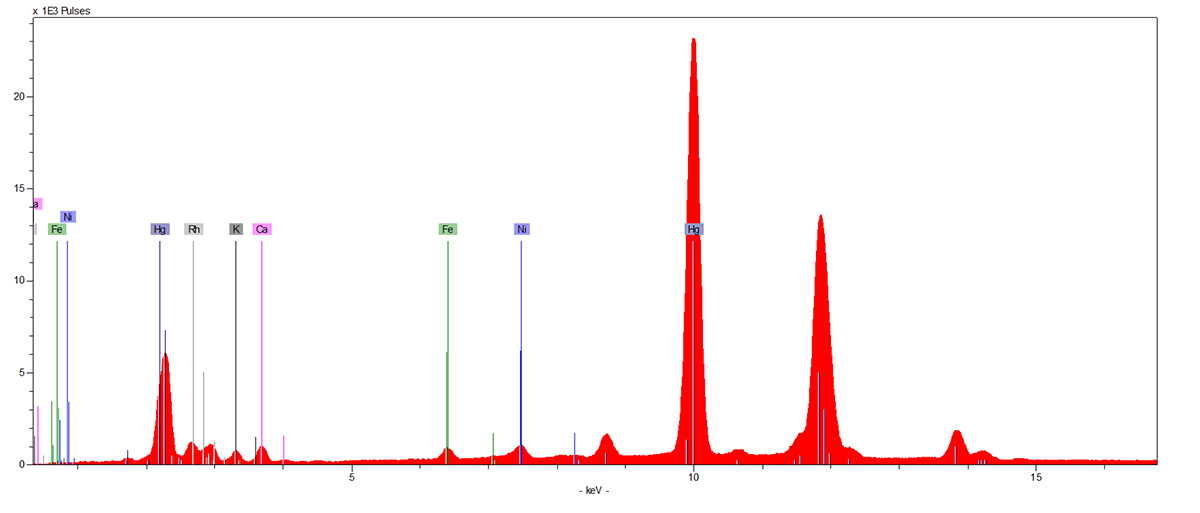
Fig. 1. Portable XRF results showing the spike of mercury (HG), which indicates the presence of vermilion in the red-painted tongue of the settee design (AMNH 16/7964).

Fig. 2. Portable XRF results showing the significant spike of iron (Fe), indicating the use of red ochre on the upper lip of AMNH mask 16/963.
According to the test results, however, there is a different red pigment present on the upper lip of the mask (AMNH 16/963), which likely dates to the same decades as the settee. A large spike of iron (Fe) suggests that this is iron oxide red from red ochre, a naturally occurring red clay present in a range of geographic locations and identified in artistic production as early as European prehistoric cave painting.5 Northwest Coast makers would have encountered red ochre as loose earth, clay, or stone.6 Red ochre was traded throughout the Northwest Coast region before European colonization, evidence that later commercial exchange of vermilion was predicated on these earlier trade connections. The black pigment on this mask (like that on the settee) is comprised of magnetite, or black iron oxide, which often lends a reflective sheen when burnished (the other mask, 16/1102, features a pigment made from bone black). Arsenic (As) also appears in many tests, explicable by the standard use of arsenical soap pesticides in early twentieth-century museum conservation.
The infrared (IR) photography test conducted on the settee backrest was another opportunity for researchers to gather data about the creation and use of the object. An infrared camera renders layers of dirt and pigment more transparent, revealing images of what lies under the surface of an object or painting. Clear infrared images of the settee’s painted motif were difficult to obtain because of the similar chemical makeup of the pigments and the surface dirt, but the process allowed for a clearer and higher contrast view of the original formline design (Fig. 3). In turn, these images aided Corrine Hunt’s recreation of the settee arms.
Fig. 3. Composite infrared photograph of the settee backrest (AMNH 16/7964), enhancing visibility of its painted Sisiyutł motif. Image produced by Rebecca Pollak, Adam Finnefrock and Jennifer Mass, courtesy American Museum of Natural History.
Portable XRF and IR analyses of the pigments on the exhibition objects allow for a fuller understanding of their relationship to both the historical color traditions of the Northwest Coast and the changes brought to artistic practice through European trade. Northwest Coast makers were committed to maintaining their customary practices, but this did not exclude the use of commercial pigments, which were more easily obtainable and often more potent.7 Materials analysis is one of the ways in which contemporary conservation science can contribute to an understanding of the historical dynamic whereby Indigenous artists maintained traditions while adapting to technological change on the Northwest Coast.8
By Tobah Aukland-Peck and Aaron Glass
PAGES IN THIS CHAPTER
- Ancheta, “A Thin Red Line: Pigments and Paint Technology of the Northwest Coast,” 89.
- Miller, Moffatt, and Sirois, CCI Native Materials Project Final Report, 26
- Ancheta, “A Thin Red Line,” 89.
- Ancheta, “A Thin Red Line.”
- Ancheta, “A Thin Red Line,” 84.
- Ancheta, “A Thin Red Line,” 87.
- McLennan and Duffek, The Transforming Image, 238.
- See Clavir, Preserving What is Valued; Todd, “Painted Memory, Painted Totems;” and Levinson and Nieuwenhuizen, “Chiefly Feasts: A Collaborative Effort.”

